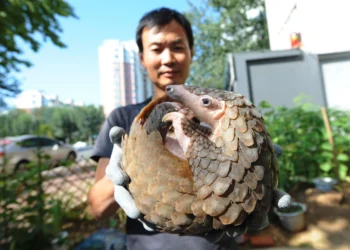Pet insurance is becoming increasingly common, and pet owners are learning that it can cover a range of unexpected expenses, from routine vet visits to accidents. Choosing the right pet insurance is a matter of knowing what options exist and what lengths you need to go to get the best price. Here’s what you need to know.
Eligibility of your pet
With pet insurance, you can protect your beloved pet against accidents and illnesses. Unfortunately, not everybody qualifies for pet insurance. Some pet insurers will not cover certain breeds (American bulldogs, for instance) or certain breeds or ages (dozens of policies exclude pets over 7 years old). Others will not cover pre-existing conditions or certain conditions like hip dysplasia.
Coverage it provides
Finding the correct coverage for your pet is just as important as finding the right vet to care for him. Nowadays, pet insurance has a different plans with different coverage for your pet, so choose the one you think you might need.
Examine additional cost
Some pet insurers cover regular wellness. Calculate if the additional expense is worth it. Compare the wellness insurance premium to what you spend annually on covered treatments. Wellness coverage varies by a pet insurance carrier. Read the specifics.
Compare
Compare pet insurance rates from multiple companies, and choose the plan that best suits your dog’s needs. If you have multiple dogs, consider a plan that lets you add up to three pets – you’ll save more money with multi-dog policies. If you need more coverage, consider getting a plan that offers reimbursements for routine and preventative care, such as routine vaccinations, heartworm tests, and dental care.
Reading Suggestion: Pet Emergency Fund – An Alternative To Pet Insurance
Waiting periods
Choosing the best pet insurance can be a challenging task, not only because of the number of plans available but because of the very long waiting periods associated with almost all plans. These waiting periods prevent coverage from starting until a certain time period has elapsed, typically from 30 days to between 90 and 120 days.
Some plans have longer waiting periods than others, but most have a waiting period of between 90 and 120 days that begins when a pet is adopted or goes to the vet. It’s not uncommon for the waiting period to begin anywhere from 3 months to 1 year before a pet receives coverage.
Exclusions
Some pet insurance plans have exclusions, or limitations, to their plans, so you should understand what they are before selecting a plan for your pet. Even the best pet insurance plans have coverage limitations or exclusions. You should know the limitations and exclusions before purchasing a policy.
Reimbursements and Deductibles
When choosing a pet insurance policy, it’s important to note which policies reimburse for pet emergencies and routine care, such as annual exams and vaccines. You pay a lower premium with reimbursement, but your co-pays and deductibles will be higher.
Some plans reimburse for routine care, others reimburse for emergency care only, and a few also reimburse for wellness care. Some plans reimburse for accidents or illnesses; others reimburse for illnesses only. After you pay your pet insurance premium, you typically pay a co-pay or deductible, and the remaining cost is reimbursed.
There are a lot of pet insurance out there and Animalia, a pet insurance company, piques my interest. Here is why.
Animalia pet insurance
Animalia pet insurance offers pet insurance for dogs and cats. Using Animalia’s insurance policy, you can rest easy knowing you have coverage for your pets’ health needs. You can get a quote online here.
“It’s not insurance; it’s peace of mind,” says Animalia pet insurance spokesperson and animal health expert Dr. Elaine Ress, Ph.D.
“Our company provides coverage as a reimbursement plan, which means we reimburse your vet directly for medical services up to 90 percent of the billed amount, which means lower co-pays and deductibles for you. We offer an annual limit which you can choose from $5K, $10k, and $25 on your reimbursements, no per-pet limit, and no lifetime maximum.”
Animalia only offers one awesome simple plan which covers accidents & injuries, illnesses, chronic conditions, hereditary conditions, diagnostics, procedures, and treatments following illnesses and accidents are covered. This simple plan also covers blood tests, lab work, imaging scans, hospitalization, surgeries, emergency treatment, cancer treatments, prescription meds, and outpatient procedures.
Another thing about Animalia is they only have 5 day waiting period, 90 seconds to submit a claim, and you can visit any vet you trust. You can add 2 options to your simple plan dental care and premium pack.
Dental care covers the dental procedure for our dogs like root canals, crowns, extractions, orthodontia, exodontia, and endodontia. The premium pack covers alternative care, behavioral therapy, as well as prescription food.
Reading Suggestion: Microphthalmia in Dogs: Symptoms, Diagnosis, and Treatment
FAQs for Animalia Pet Insurance
Do You Need My Pet’s Medical records?
They will be able to get to know your pet better and establish which problems, if any, are deemed pre-existing conditions based on the medical information that you have provided. When you purchase their coverage, you grant them permission to speak with your veterinarian on your behalf in order to get the aforementioned information. This would also assist speed up the process of examining the claim you have made for your pet insurance.
What if I Want to Cancel My Pet Insurance Policy?
You can do it at any time as long as you give Animalia a written notification. It’s even possible that you could get some of your premium money back.
What Are Pre-Existing Conditions and Are They Covered?
A pre-existing condition is any injury, illness, or abnormality that you or your veterinarian discovered before the end of the waiting period for your policy. The majority of insurance companies for pets do not provide coverage for them. Fortunately, Animalia will cover conditions that can be cured, meaning that patients will be free of symptoms and no longer require treatment for a period of one year.
Conclusion
In conclusion, pet insurance can be a smart and affordable way to offset some of the costs of veterinary care. Knowing what kind of coverage you’ll need and which companies offer that coverage can help you make a more informed decision.









